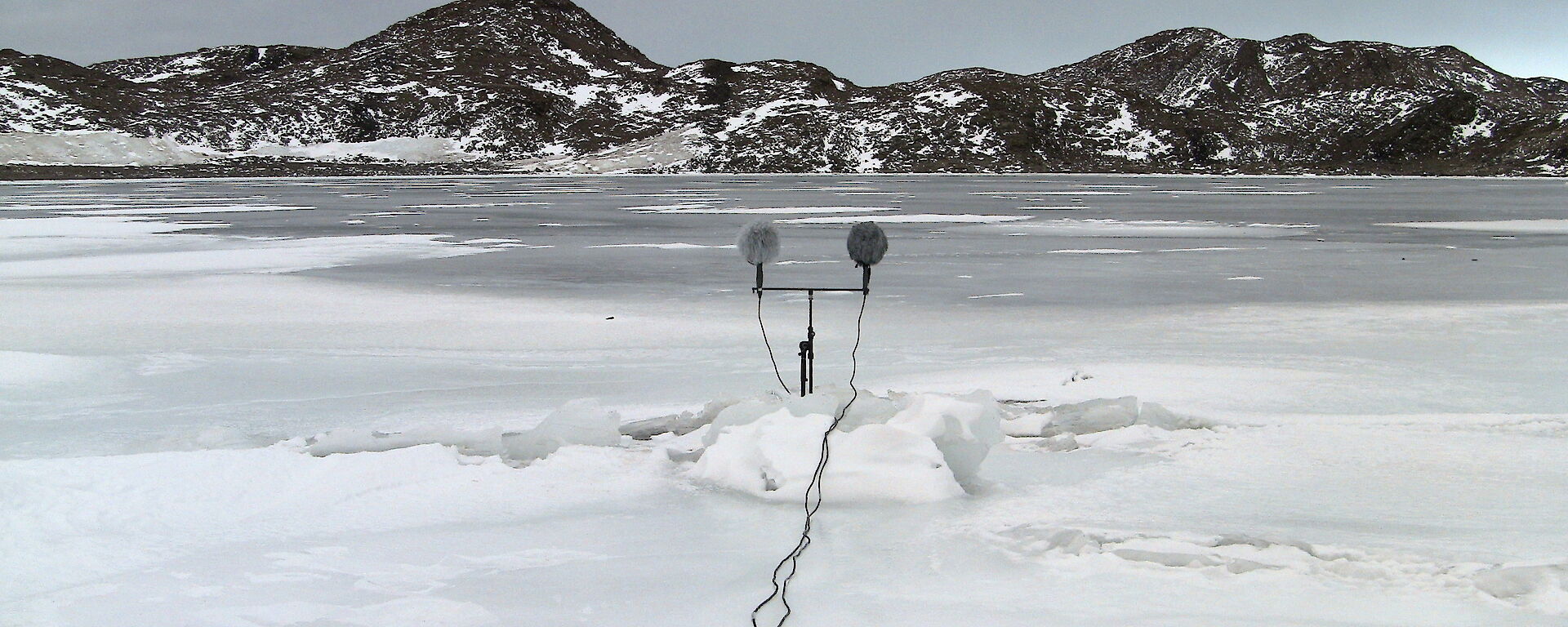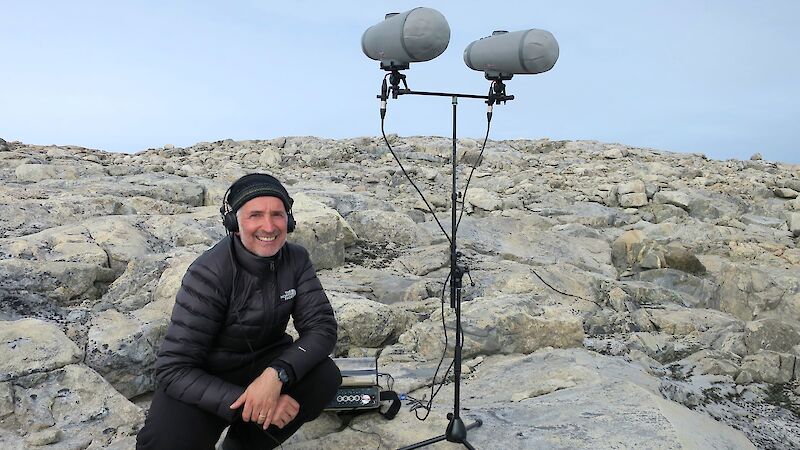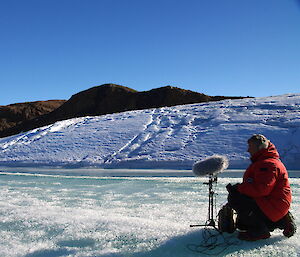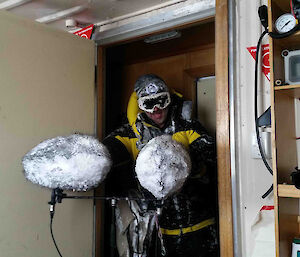"I am particularly intrigued by Hurley’s depictions of life on the ice through two iconic photographs, The Blizzard and Leaning on the Wind, both taken in 1912. The photographs convey the ferocity and atmospheric effects of the conditions using a mix of techniques, including staged scenes and composite printing, to viscerally express something almost impossible to articulate through conventional documentary photography. Inspired by these evocative depictions of abstract landscapes shaped by volatile conditions, I wondered how I could produce an equivalent account using sound recording techniques to render an embodied experience of extreme climate." — Professor Philip Samartzis
Meet Professor Philip Samartzis
Professor Philip Samartzis is a sound artist, scholar and curator with a specific interest in the social and environmental conditions informing remote wilderness regions and their communities. His art practice is based on deep fieldwork where he deploys complex sound recording technology to capture natural, anthropogenic and geophysical forces. The recordings are used in various exhibition, performance and publications to demonstrate the transformative effects of sound.
Samartzis is a Professor within RMIT School of Art, and the artistic director of the Bogong Centre for Sound Culture.
Arts Fellowship project
Samartzis travelled south with the Australian Antarctic Division in 2009/10 and 2015/16, making field recordings of the unique sounds of Antarctica. He has used these recordings to create soundscape compositions exploring the impacts of extreme environmental conditions on people, and how they adapt to those conditions.
In 2009/10, Samartzis made field recordings of sounds while travelling on the Aurora Australis, at Davis research station where he spent 6 weeks, and on the return trip via Macquarie Island. These recordings were used to develop a series of audio works for galleries, performances and festivals.
Samartzis was awarded a second Arts Fellowship in 2015, and travelled to Casey to explore the interaction of katabatic wind with the built and natural environments.
Find Professor Philip Samartzis’s work
Samartzis has produced numerous projects that have stemmed from his Antarctic Fellowship, including curated projects, exhibitions, compositions and publications.
Samartzis features on the $2.20 stamp issued by Australia Post in 2021 commemorating the Australian Antarctic Territory Arts Fellowship program.
He produced Array (2021), a sound installation, in collaboration with Eugene Ughetti and released on LP by Room40.
The Blizzard (2021), a 7.1 surround sound composition, was presented at The Capitol as part of NGV Melbourne Design Week.
Contact and Isolation (2020), a stereo composition, was presented at the Art Gallery of South Australia (2020) and the Tasmanian Museum and Gallery (2021).
Polar Force (2018), a performance project with Speak Percussion, has toured internationally. It received an Honorary Mention at Prix Ars Electronica for the Sound Art and Digital Musics category (2019).
Floe (2018), an installation with Roland Snooks, which was commissioned by the NGV for Triennial Extra. The work was acquired by the NGV for their permanent collection.
Antarctica, An Absent Presence (2016), a book accompanied by two compact discs, was published by Thames and Hudson Australia.
In 2014, Samartzis produced a composition for France Culture in association with the INA-GRM in Paris, and the ABC Radio National’s Audio Arts Unit in Melbourne. The bi-lingual composition titled Antarctica, An Absent Presence was presented on radio and podcast.
Sound and video installation Crush Grind was presented at the Antarctic Creative Arts Conference at the Australian National University, and Hobart's MONA FOMA festival in 2011.
Samartzis also participated in an Artist in Residence program at the Institute for Computer Music and Sound Technology at the University of Arts – Zurich in July 2011. He composed a new work from his field recordings of the Aurora Australis which was presented at the NGV for White Night (2013).
Samartzis’s sound recordings continue to inform new compositions for exhibition and performance, designed to generate tactile and immersive experiences of the sonic ecology of extreme climate and weather events.






